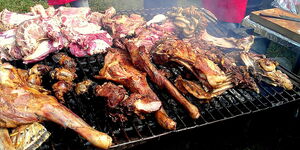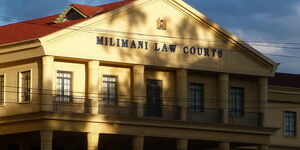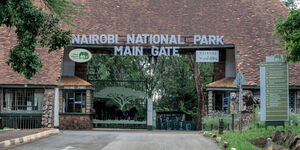The Tsavo Conservation area that consists of the Tsavo East and Tsavo West National Park has come under threat in the past months from separate fire incidences that have destroyed thousands of acres of vegetation.
According to the Kenya Wildlife Service (KWS) over 99,000 acreas of vegetation were destroyed in the most recent fires with four incidences reported in a span of two months.
The magnitude of the infernos paints a grim picture for the conservation area as many animals are likely to starve due to the destruction of their food source.
Speaking to Kenyans.co.ke, John Kabue, a research scientist working in the Tsavo Landscape stated that the fire incidences were reported at the end of the rainy season during which plants had sprouted and acted as fuel for the fires.
"Large herbivores and carnivores can run to safety in the event of the fire, however the biggest casualties are smaller animals like tortoise, snakes, rodents and birds," he noted.
Kabue further explained that the magnitude of the fire would have disastrous effects on the ecology of the area as the next rains would be expected in October 2020.
"Reclaiming the land is not easy, because so much life has been disrupted with nearly 100,000 acres of vegetation destroyed," the researcher stated,
The scientist divluged that fire management strategies should be adopted to prevent such incidences in future. He advocated for fire breaks which limit the spread of fires in such incidences.
Following the fires, KWS issued a statement, cautioning the public against setting fires close to national parks and reserves as in most cases the fires end up affecting wildlife and habitats.
The conservation body warned that a Ksh200,000 fine would be placed on those found lighting fires around national parks and reserves reiterating that it was punishable by law.
“Any person who sets fire to any vegetation in any wildlife protected area or allows any fire lighted by himself or his servants to enter a wildlife protected area commits an offence and is liable on conviction to a fine of not less than two hundred thousand shillings or to imprisonment of not less than two years or to both such fine and imprisonment,” Section 102 part 9 (b) of the Wildlife Conservation and Management Act 2013 states.
The park that covers an estimated 13,747 square kilometres is home to most of the larger mammals, vast herds of dust–red elephant, Rhino, buffalo, lion, leopard, pods of hippo,crocodile, waterbucks, Lesser Kudu, Gerenuk and Hirola.












